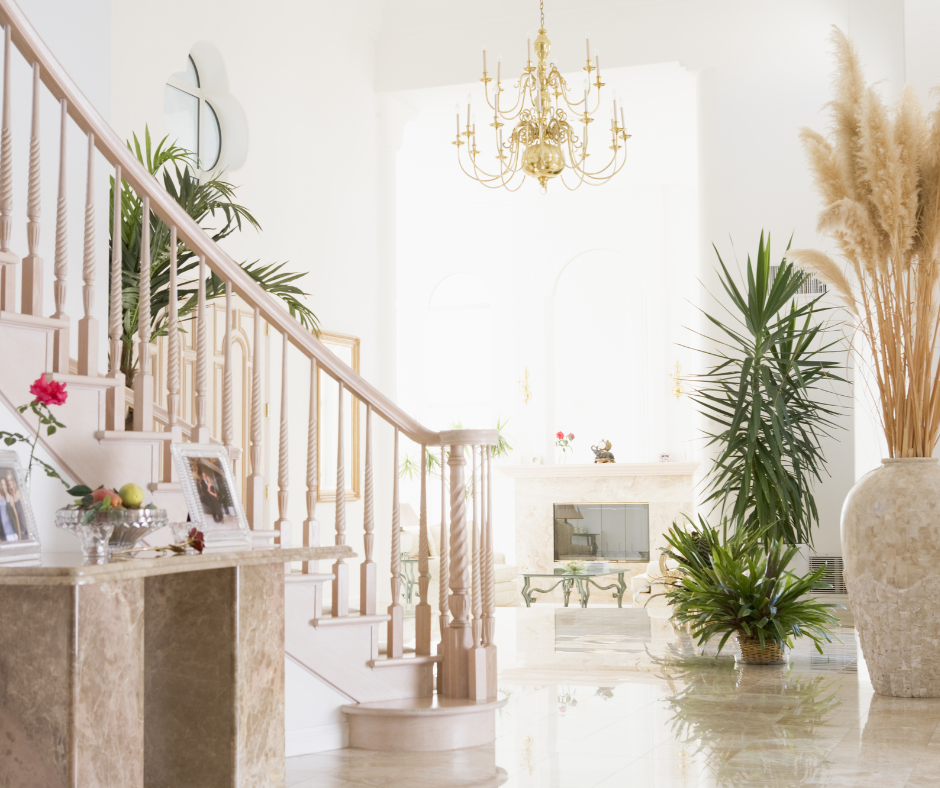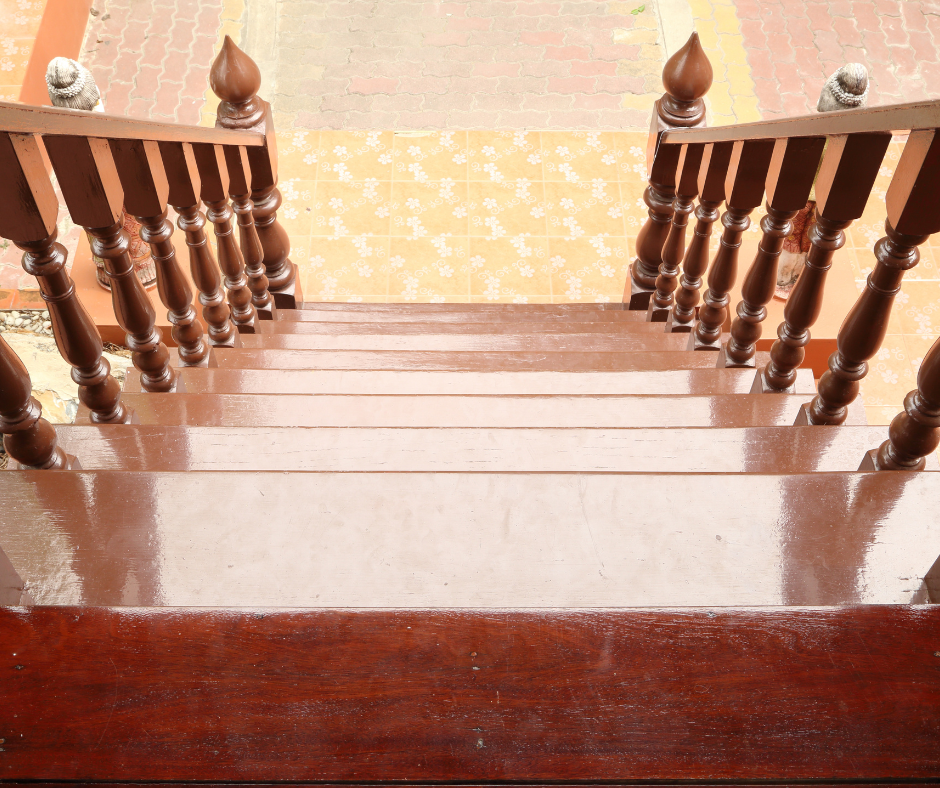Planning stairs for your home?
Understanding what is a standard stair tread depth is crucial for both safety and comfort.
The standard tread depth ranges from 10 to 11 inches, providing enough space for your foot to land securely with each step.
This guide walks you through everything you need to know—from code requirements to how carpet stair treads can subtly affect depth.
You'll also learn how to measure correctly and what dimensions work best for basements and interiors.
If you're customizing or upgrading your stairs, this guide ensures you get it right the first time.
Why 10 to 11 Inches is the Gold Standard
Ever stepped on stairs that felt too narrow?
It’s not just annoying—it can be dangerous.
Too shallow, and your heel might hang off the edge.
Too deep, and you end up overreaching, throwing off your balance.
A stair tread depth of 10 to 11 inches offers the perfect balance.
It feels natural underfoot, whether you’re climbing up with a laundry basket or heading downstairs with your morning coffee.
Designed Around Safety and Comfort
Safety experts and building codes alike favor this depth because it reduces the chances of slips and trips.
The 10–11 inch range gives your entire foot a secure landing spot.
It also allows for a natural stride rhythm—important for children, seniors, and anyone with mobility issues.
If you're thinking about adding stair tread covers or carpet treads, remember that those materials may visually extend the step, but the underlying depth stays the same.
What About the Stair Riser Height?
Tread depth is only half the story.
The vertical part of the stair—called the riser—matters just as much.
In most homes, the standard stair riser height is between 7 and 8 inches.
This is the rise between one stair and the next.
Together, these two measurements—tread and riser—create the overall stair slope, which directly impacts how easy or tiring stairs are to use.
Is 8 Inches Too Tall for a Riser?
It depends.
An 8 inch riser is the upper limit of what building codes typically allow.
For most people, it’s manageable—but it can be a bit steep for toddlers, elderly family members, or anyone recovering from injury.
In homes where ease of movement is a top priority, staying closer to 7 inches is often better.
If you’re pairing this riser with a tread depth in the 10-11 inch range, the stair remains balanced.
Too steep of a riser paired with a shallow tread can quickly lead to discomfort—or worse, accidents.
Tread Depth and Code Compliance
Whether you're building stairs inside a home or adding carpet treads to existing ones, it’s important to know that most U.S. building codes follow similar stair guidelines.
Though exact requirements can vary by region, most local building codes recommend or require:
-
Tread depth of at least 10 inches
-
Riser height not exceeding 8 inches
-
Tread and riser consistency throughout the staircase
Inconsistency between steps is one of the biggest fall risks—so whatever depth you go with, make sure it's the same for each tread.
A sudden difference in height or depth mid-staircase can trip up even the most careful walker.
The Role of Interior Stair Tread Depth
When designing or updating your staircase inside your home, the standard interior stair tread depth is almost always 10 inches.
This depth allows for seamless movement through hallways, living rooms, or entryways without taking up too much floor space.
It’s also the size most commonly used for prefab or builder-grade staircases.
Adding carpet stair treads to interior stairs doesn't usually require changing the depth—but it does give you more texture, warmth, and grip.
So, while the interior stair tread depth stays consistent, the stair’s feel and appearance can be easily elevated with DIY stair treads.
Understanding Basement Stair Tread Depth
Basements often pose unique design challenges, especially in older homes or remodels.
But generally, basement stair tread depth follows the same 10 to 11 inch rule used throughout the rest of the house.
This consistency ensures safety and familiarity across all floors.
That said, there are some special cases.
Tight spaces, unfinished areas, or older basements may have slightly different dimensions due to space constraints or outdated code standards.
Still, when planning a renovation or installing carpet stair treads in a basement, it’s best to align your basement stair tread depth with your interior stairs.
This not only feels better underfoot—it also avoids abrupt changes that might cause stumbles.
Can You Customize Stair Tread Depth?
Yes—but with caution.
If you're building stairs from scratch or doing a major renovation, you may have the option to adjust tread depth to better match your needs.
Here are a few reasons you might want to customize:
-
Increased comfort for seniors: Wider treads with lower risers can make stairs easier to navigate.
-
Design aesthetics: You may want a more modern, dramatic look with extended treads.
-
Home accessibility upgrades: A safer, more gradual staircase could be necessary for those using mobility aids.
Still, any customization should stay within your local building codes and strike a balance with riser height.
If you go deeper on the tread, you often need a shorter rise to maintain a safe angle.
How Carpet Stair Treads Affect Depth
Adding carpet stair treads is one of the easiest ways to boost both comfort and safety on your stairs.
While they don’t technically change the measured depth, they do add visual bulk and soft padding, which can make steps feel deeper.
Here’s what you should keep in mind:
-
Choose low-pile materials if you want to keep the feel as close to the original wood as possible.
-
Make sure the carpet wraps around the nosing correctly.
-
Adhesive-based treads (like Oak Valley’s) install without permanent damage or staples.
This is especially helpful if you're looking for a DIY project that adds traction and style—without tearing out your staircase or violating code.
How to Measure Stair Tread Depth at Home
Measuring your stair tread depth is easy and requires just a few tools:
You’ll Need
-
A measuring tape
-
A notepad (or your phone) for notes
-
Optional: a level
Steps
-
Place the measuring tape at the back of the tread (where it meets the riser).
-
Extend it to the outermost edge of the step (nosing included).
-
Record the measurement in inches.
Repeat this for each stair to ensure they’re uniform.
If any vary by more than 3/8 inch, that could be a safety hazard—and something you may want to fix or cover with treads to even things out.
Frequently Asked Questions
Q: What is the ideal stair angle?
A: Most stairs have a slope between 30–37 degrees.
This angle is considered safe and easy to walk on when tread and riser dimensions fall within the standard range.
Q: Can I install carpet stair treads if my steps are non-standard?
A: Yes. Carpet stair treads work well on slightly irregular steps.
Just measure carefully and consider ordering custom sizes if your treads are shorter or deeper than usual.
Q: Will adding treads help reduce noise?
A: Absolutely.
Carpet treads can dramatically reduce footstep noise, especially in homes with hardwood stairs and multiple family members moving between floors.
Final Thoughts on What is a Standard Stair Tread Depth
Getting your stair tread depth right is one of those small details that has a big impact.
Whether you're updating stairs in your entryway, hallway, or basement, sticking to the 10 to 11 inch range ensures a staircase that’s both safe and welcoming.
Matching your interior stair tread depth with your basement stair tread depth also helps create a consistent feel across your home, reducing the chances of missteps or fatigue.
And remember—while customization is possible, it’s essential to keep your local codes in mind.
Every step in your home should feel intentional and intuitive.
If you're ready to upgrade the look and feel of your stairs without changing their structure, Oak Valley's carpet stair treads offer a stylish, family-friendly solution that blends comfort with craftsmanship.
Stepping It Up
Understanding what is a standard stair tread depth isn't just for builders or code inspectors—it’s for anyone who wants a home that feels good to live in.
The right depth helps your family move safely, your guests feel welcome, and your design vision come to life.
From main staircases to basements, every step counts.
And if you're looking for a better way to make your stairs both beautiful and safe, Oak Valley is here to help.
Let’s make every step a better one.
-
Website: https://oakvalleydesigns.com/
-
Phone: 706.331.0315
-
Email: info@oakvalleydesigns.com
-
Address: 30 River Ct SW Bldg E Cartersville, Ga 30120




